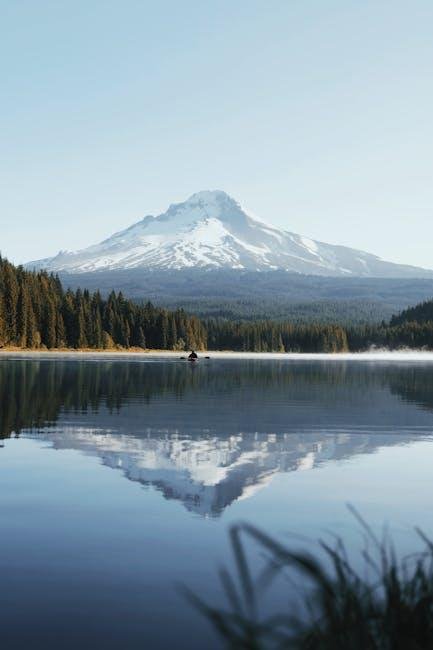As the sun begins itS slow ascent over the horizon,casting a golden hue across tranquil waters,the world awakens to the serenity that only nature can provide. Kayaking on calm waters is not just a leisurely pastime; it is an invitation to harmonize with your surroundings,to embrace the gentle lapping of waves against your craft,and to discover the beauty that lies just beyond the shore. Whether you’re a seasoned adventurer or a curious beginner, starting your kayaking journey on these placid lakes and rivers can be both exhilarating and deeply meditative. In this guide,we will explore the essentials—and the nuances—of launching your kayaking experience,ensuring that your first paddle stroke is not only safe but also filled with delight and wonder. Join us as we navigate the path to becoming one with the water, unlocking the secrets of kayaking on calm waters.
Choosing the Right Kayak for Your Adventure
When setting out on your kayaking adventure, selecting the right kayak is crucial to ensure a smooth and enjoyable experience on calm waters. Here are some key factors to consider:
- Type of Kayak: There are generally two main types suitable for calm waters: recreational kayaks which are wider and more stable, and sit-on-top kayaks that offer easy entry and exit.
- Size and Weight: Consider the kayak’s size and your ability to transport it. Smaller, lighter kayaks are easier to handle but may offer less stability.
- material: The construction material affects durability and weight. Plastic is rugged and budget-friendly,while fiberglass is lightweight and sleek.
Ensuring comfort during your paddles is just as crucial as the kayak’s features. Look for kayaks with well-padded seats and adjustable footrests.You might also wont to examine the following:
| Feature | Description |
|---|---|
| Storage Space | Consider kayaks with compartments for gear to keep your essentials safe and dry. |
| Stability | Wider hulls provide better stability, making them ideal for beginners. |
| Price Range | Set a budget to guide your choice; prices can vary greatly depending on type and features. |

Essential Safety Gear and Equipment for Calm Water Kayaking
When embarking on a kayaking adventure on calm waters, having the right safety gear and equipment can make all the difference in ensuring an enjoyable experience. first and foremost, ensure you have a Personal Flotation Device (PFD) that fits snugly; this is your first line of defense in the event of an unexpected swim. Alongside your PFD, consider investing in a whistle to signal for help if needed, and a dry bag to protect your essentials from water damage. Additional safety gear includes a first aid kit for minor injuries and sunglasses with lanyards to safeguard against losing them during your paddle. Always keep a map or compass on hand for navigation to stay oriented, even in the tranquil surroundings of calm waters.
In addition to personal safety gear, equipping your kayak properly is equally critically important. A spray skirt can help keep the interior of your kayak dry, while a sturdy paddle float can assist with re-entry in case you tip over. Don’t overlook the utility of reflective tape to enhance visibility during early morning or late evening outings. A safety leash for your paddle ensures you won’t lose it easily, and extra clothing layers can be invaluable in case of unexpected temperature drops.Preparing for any situation with the right equipment not only promotes safety but can also enhance your enjoyment on the water.

Mastering Basic Paddling Techniques for a Smooth experience
To ensure a smooth kayaking experience on calm waters, it’s essential to master basic paddling techniques. Begin by adjusting your grip on the paddle: hold it lightly at shoulder-width, with the blade angled away from you. this grip allows for maximum power and control. When paddling, focus on engaging your core rather than solely using your arms.Using your torso to initiate each stroke enhances your strength and minimizes fatigue. Remember to maintain a comfortable posture with a straight back and relaxed shoulders to avoid strain.
Aside from grip and posture, developing an effective rhythm can greatly improve your efficiency on the water. Aim for a steady pace, allowing for even strokes. Some key tips to master this rhythm include:
- Consistency: Try to keep your tempo steady; pick a pace that feels comfortable.
- Stroke Depth: Submerge the blade fully while ensuring it’s not too deep to avoid dragging.
- Switching Sides: Alternate sides every few strokes to maintain balance and control.
To further refine your technique, consider practicing different paddle strokes. As a notable example,the forward stroke helps propel you straight ahead,while the reverse stroke is perfect for slowing down or changing direction.There are also techniques like the draw stroke and brace stroke that enhance your maneuverability and stability. Experiment with these strokes within your comfortable paddling environment for a better understanding and mastery of your kayak.

Exploring Scenic Routes: Best Calm Water Destinations for Kayakers
For those looking to embark on a serene kayaking adventure, there are numerous breathtaking destinations that offer calm waters ideal for both beginners and seasoned paddlers. These scenic routes not only promise tranquility but also showcase the natural beauty of the surroundings. Consider exploring these captivating locales:
- Lake Tahoe, California/Nevada: Renowned for its crystal-clear waters and stunning mountain vistas, Kayaking on Lake tahoe provides a rejuvenating experience as you glide across its tranquil surface.
- florida’s Banana River: This calm estuary is perfect for wildlife enthusiasts, where manatees and dolphins frequently make appearances alongside serene mangroves.
- Pagosa Springs, Colorado: With its gentle rivers and hot springs, Pagosa Springs offers a picturesque backdrop that allows kayakers to connect with nature.
- Trillium Lake, Oregon: Nestled beneath the towering Mount Hood, the still waters of trillium Lake create a mirror-like surface, making it a photographer’s paradise.
Planning trips to these peaceful kayaking destinations can be greatly enhanced by taking note of key factors such as water conditions, accessibility, and amenities available for paddlers. Here’s a brief table highlighting essential details for each location:
| Destination | Best Time to Visit | Accessibility | Wildlife Sightings |
|---|---|---|---|
| Lake Tahoe | May – September | Easy public access | Fish, Bald Eagles |
| Banana River | Year-round | multiple ramps available | Dolphins, Manatees |
| Pagosa Springs | May – October | Accessible with rentals | Elk, Otters |
| Trillium Lake | Summer months | Parking available | Swans, Deer |
Concluding Remarks
As you dip your paddle into the tranquil embrace of calm waters, remember that the journey of kayaking is as much about exploration as it is indeed about connection—with nature, with your equipment, and with yourself. By following the tips and techniques outlined in this guide, you’ve taken your first steps towards mastering the art of paddling. Embrace the rhythm of the water,the gentle sway of your kayak,and the serenity that surrounds you.
As you embark on your kayaking adventures, may you discover not only the joy of gliding across still lakes and peaceful rivers but also a newfound appreciation for the landscapes you traverse. So, gear up, choose your route, and let the wonders of the waterways unfold before you. Your journey on calm waters has just begun—may it be filled with laughter, learning, and unforgettable moments. Happy paddling!
